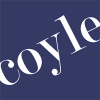How can a restaurant manager think outside the box when they’re actually in that box 16 hours a day, seven days a week? Sometimes, the only way to do it is to take a few steps back from that ‘box’, and conduct a solid guest experience audit.’
 Creating a good working audit, analyzing it and implementing changes as a result can take your business to the next level, say restaurant consulting companies. And while quality assurance audits from Coyle-referred professional mystery shoppers can help your restaurant immeasurably when it comes to evaluating the guest experience, it’s not just professional restaurant secret shoppers who can help you. You can solicit friends, professionals and trusted business advisors to provide feedback as well, so long as you administer it consistently and with some basic ground rules in place.
Creating a good working audit, analyzing it and implementing changes as a result can take your business to the next level, say restaurant consulting companies. And while quality assurance audits from Coyle-referred professional mystery shoppers can help your restaurant immeasurably when it comes to evaluating the guest experience, it’s not just professional restaurant secret shoppers who can help you. You can solicit friends, professionals and trusted business advisors to provide feedback as well, so long as you administer it consistently and with some basic ground rules in place.
What are some of the best ways to conduct your own audit? Through its years of experience in restaurant consulting and in designing and implementing mystery shopping programs, Coyle has pinpointed key areas to focus on.
1. Take to the Internet: This report is not a treatise on web marketing, but keep in mind that the guest experience with your brand often begins when consumers seek it online.
Pretend you are a business executive with an expense account. You’ve just arrived in town for a two-day meeting and you need a spot to eat. Go to Google and start the search by doing what a potential client would do: key in words that would help them find the right place. You’ll be surprised by what you find, especially since Google is constantly tweaking the algorithms that produce local results. Does your website show up – and what does your position say about you? What is the searcher learning about your competitors?
2. Focus on site benefits: Staying in the role of an out-of town business exec, let’s say you’d like a place with a traditional, but varied menu, a great wine list, and a happening bar scene. Now think about the information provided on your site – does it meet this businessperson’s needs?
For instance, can they contact you quickly (is the phone number on every page?), can they find you (are there locations, directions and maps), can they see what you serve (easily clickable menus)? Let’s also face the fact that an online booking tool is highly desired. Restaurant consultants agree that too many restaurants fill their sites with features rather than benefits that should meet one purpose: to help the uninformed feel that they’ve made a good decision.
3. Create standards: Compiling a list of things that can be inspected has huge upsides. For one thing, after you’ve implemented these standards a few times, they become principles. And it’s the most straightforward way of specifically improving your product. We recommend that you start with four easy categories:
- Service: The tasks you expect to be completed
- Engagement: The behaviors you expect your staff to convey
- Facility-Cleanliness: Anything the guest sees, touches or hears
- Food: An obvious category, but be sure to include beverages
4. Create good standards: Your benchmarks should be binary and specific, yielding a ‘yes’ or ‘no’ answer. A standard that asks the beholder to rate the timing of the meal on a scale of 1-7 might seem like a good idea, but it is not. Asking if the server came to the table in three minutes, however, not only states the benchmark clearly, but the result will be either a hit or miss. We’ve found this approach to be much more useful in the restaurant mystery shopping programs we designed. After developing standards for more than 200 restaurant concepts and having them tested by our network of professional mystery shopper evaluators, we can assure you that knowing your hits and misses is a lot better than churning out percentages.
Along these lines, avoid standards that combine two separate attributes. For instance, it’s best to separate service components. Rather than asking, “Did the service check on you within three minutes and smile?” create two separate standards that evaluate each of these components (timing and engagement).
5. Keep the standards list compact: There is always a temptation to list everything you can think of on a standards list. Take the restroom, for instance. It may be important that there be no chipped tiles, no burned-out bulbs, no pools of water on the vanity, no paper towels on the floor, no off-odors and plenty of toilet paper, but a long list of standards will ultimately create a narrow scoring range. This has two distinct disadvantages: a great experience won’t be distinguishable from a mediocre or poor one because you always score between 88-92%, and long standards lists inevitably contain items that aren’t crucial to the guest experience. A busy restaurant is expected to have a bit of splashed water or the odd paper towel on the floor. A bathroom that smells awful and is short on supplies, however, is something to worry about. Your guest experience audit for bathroom cleanliness should probably have no more than four binary-driven standards.
A good exercise is to ask yourself some form of the following question: “If I could ask my bartender to do only three things consistently every night, what would those three things be?” If you need to add a few more after you’ve jotted down these three items, so be it, but remember, this is about what the guest wants and expects, not about including everything you want to give.
6. Eliminate subjectivity: There will always be a subjective element to restaurant quality audits, of course. After all, you’re trying to quantify an experience. But you can quantify parts of the experience to a meaningful degree. A statement from a mystery shopper that says something like, “the entrée was tender” yields far less useful results, than something like, “the entrée was hot (not just warm).”
7. Allow for narrative: The biggest mistake we see in guest experience audits is when operators try to quantify the subject by asking people to list attributes. Instead of asking your inspector to pick from a list of things that they would rate a ‘5-Very Good,’ ask them what the best part(s) of the experience were. Questions like, “If you became the owner here tomorrow, what would be the first thing you would change?” yield thoughtful results. A few questions that start with “what” or “why” will provide context, which is badly needed when you’re selling guest experience and customer service.
8. Tweak it: Invite some input from stakeholders after a BETA run. Raise the bar for your staff when necessary. If 20 of the 25 standards you measure scored 100% on every inspection, make them a little harder (but not impractical or impossible) to achieve.
9. Communicate restaurant quality audit standard and practice, practice, practice: Another mistake most operators make is not giving new employees a list of the standards created and making them go through the inspection themselves. If you have done the hard work of designing a compact and meaningful list of standards, it won’t be as difficult for new staff members to get on board, and they won’t feel overwhelmed by a huge list of items they can’t possibly remember. During the pre-meal, pick one standard to focus on during that night’s performance in order to practice and perfect that standard.
10. Document the superstars: Peer modeling is 100 times more effective than giving someone a list of standards and telling them to achieve every one. If you get a comment card about how wonderful Joe the bartender was, call the guest, get the whole back story and memorialize Joe on your intranet (or use a module like Coyle’s Peak Performance product). These epic stories of heroism make lasting impressions on all, especially when there’s a story behind it. If you leverage the heck out of that, all your new bartenders will know what Joe did on his search for the holy grail of great service.
If you would like help developing metrics or standards for a guest experience or brand audit, contact us; we have done this for more than 200 hospitality companies. For more information on how Coyle’s quality assurance and mystery shopping program-design services can help your restaurant create guest experience audits, click here.













